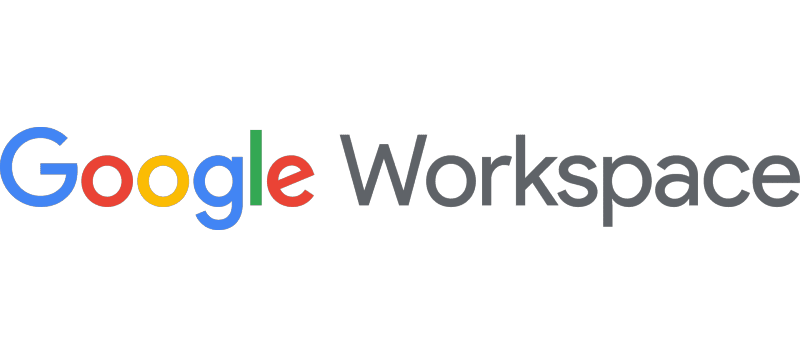The Top 5 Challenges Facing HR Today (And How To Fix Them!)
Understand more about the greatest challenges facing the HR function right now.
Hear more about how continual digital transformation has changed the shape of these in-tray issues — they’re not quite what you think they are!
Get to know how to create solutions for these challenges that are geared towards the identity and capabilities of your organization.



It can feel like we have been talking about digital transformation forever. But the challenges keep evolving, making it harder and harder for HR to reach the finish line. This is why IDC and Google Workspace partnered, in order to understand where the function should be focussing time, energy, and money to the greatest effect.
Finding that the biggest challenges for people teams exist around the areas of digital dexterity, talent attrition, business siloes, engagement, and work structures, this webinar sees Kate Graham, Head of Content Labs and Insights at UNLEASH joined by Drita Savasan, Global Strategic Lead at Google Workspace and Angela Salmeron, Future of Work, Lead Analyst at IDC to discuss what the experts at Google and IDC believe is HR’s critical role in steering organizations through this period of change to successfully tackle these bottlenecks in business transformation.
You need to have people on board and build resilience because of the bumpy road we have ahead of us.
Angela Salmeron, Future of Work, Lead Analyst at IDC
Watch on-demand to:
- Hear how leading organizations are tackling skills gaps, attrition, business agility, employee engagement, and hybrid working.
- Get more information on how to link your people and cultural evolution to the digital revolution for long-term success.
- Takeaway a roadmap to create a workplace that works for your organization and your unique context.
- Understand more about how technology can offer solutions to learning and skills needs — and how the right solution can bring this together in one platform.
HR’s biggest talent and leadership challenges
Graham kicked off the webinar by asking the HR audience what their biggest challenge currently is. 40% said the skills gap was their biggest challenge, followed by evaluating performance and finding the right kind of working structure to benefit their organization. This didn’t surprise IDC’s Salmeron as many of these challenges, she stated, exist because the how, why, and the where of the modern workplace is transforming at a rapid rate, destabilizing areas of work that HR previously had consistent models and operations for.
To fix these rapidly transforming problems, Salmeron explained, HR leaders and business leaders need to work closely together, building on a relationship that often flourished during the peaks of the pandemic to get a company through difficult moments. Here, Google’s Savasan added, a shared vision is key to success, as well as a cohesive strategy that includes consideration of purpose, organizational change, sustainability, digital dexterity, and innovation.
The role of technology in solving big workplace questions
Crucially, Savasan explained, having the technology to support this organizational prioritization is also important. At Google, they do this by ensuring employees have the right digital tools, and open access to documents and projects — the Cloud is useful here — to ensure this can happen.
Deployment of these digital solutions also means thinking about how a problem can be solved for everyone. This means if the solution is technology-based — such as using cloud-based documents or searchable chat functions to allow access to information — then it must have equity built into it i.e. accessible by someone who might have a hearing impairment or is using it via their phone. In this way, a business is helping some develop their career and skills whilst also ensuring access to work, and pushing forward business priorities.
Skills, digital and flexibility problems
Yet before HR can think about crafting the right solution it needs to face up to the size of the task at hand. They need to understand how the Great Resignation, organizational rigidity, problems with new working structures, and workplace disconnection are affecting their business.
Currently, one in three employees is looking for jobs, with many reconsidering their careers to get a better experience of work, better pay, better development opportunities, and more flexible work. In addition, organizations are struggling to break down siloes and create workplace policies that allow team members to collaborate, be productive, thrive, and grow. There are also ongoing problems with trust, micromanagement, a lack of best-in-class technology to support hybrid work, and ongoing disconnection between companies, leadership, and the workforce. Not much then!
Finding a way forward…
Whilst even one of these issues is a massive problem taken on its own, HR has to get its head around all of them. Yet, as Salmeron explained, the function doesn’t have to solve all the issues on its own. If it can create good frameworks and underpin a strong culture, some of the challenges can be solved by the workforce itself.
What this culture should look like is therefore a pertinent question. Google’s Savasan explained that at Google they have, by default, blameless open culture where failure is encouraged in order to drive learning — as long as that failure has been the result of trying to create something that works towards the business purpose. In addition, leaders encourage employees to take time for themselves to learn, and the organizational approach to time management, working day structure, and campus design has been done in a way to underpin serendipitous meetings in order to drive knowledge sharing.
In fact, Savasan added, the role HR can take is that of a cultural curator in order to help their business: by encouraging fail-fast environments and organizational designs which give employees the ability to deliver on business purposes and collaborate and innovate securely. However, they must also ensure that employees have the right applications and learning tools.
At Google, this is accessed via Google Workspace and internal tools , such as Hallpass or Classroom, or even employee-led resource groups on Google Chat where knowledge and ideas can be shared. As Savasan said: Google Cloud Search which indexes Google Workspace data can be great as a working tool that gives them autonomy in finding solutions and accessing learning. Furthermore, to break down siloes, cloud-accessible solutions are also key here, in terms of democratizing access to information and improving flexibility.
…and overcoming hurdles
Google’s Savasan added that HR also needs to ensure that new working structures aren’t siloed and that they are secure and enabled by good technology. There also needs to be consideration of how enabled employees are to deliver for the business — Are they well? Do they have security? Are they given accountability? — as well as ensuring that all employees, even frontline workers, have equity in and access to new digitalized workspaces.
In many ways, added Salmeron, HR acts as a convener and guide, ensuring that everything stays compliant and that the leadership’s needs, employee needs, and business needs are balanced when coming up with frameworks that can create new effective, digital-first workplaces.
And, in this way, Savasan explained, HR, supported by technology, can make sure everyone gets a say — whether they are a remote, hybrid, desked, or deskless worker — and the function can help create new purposeful organizations that are geared up to win.
